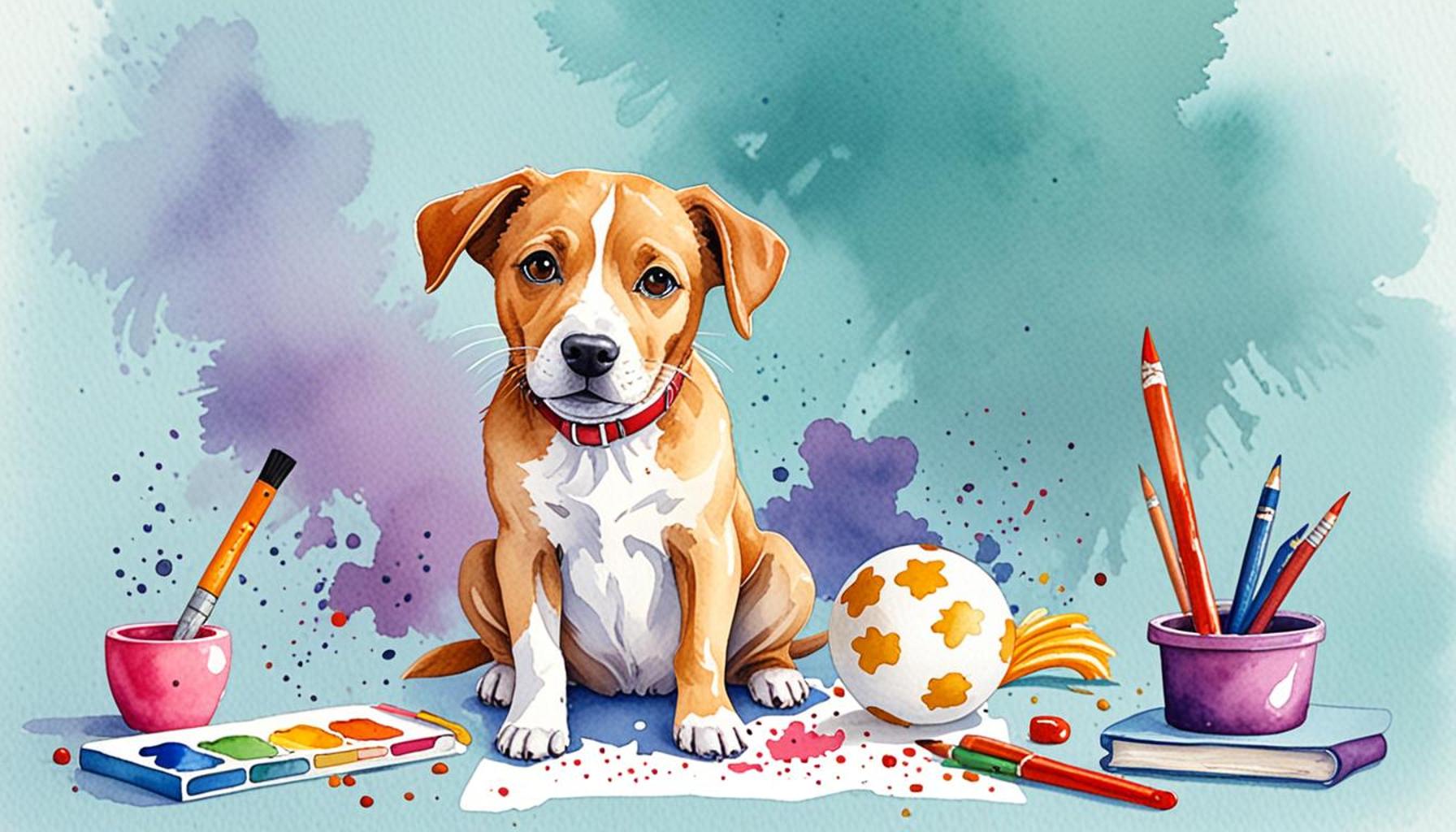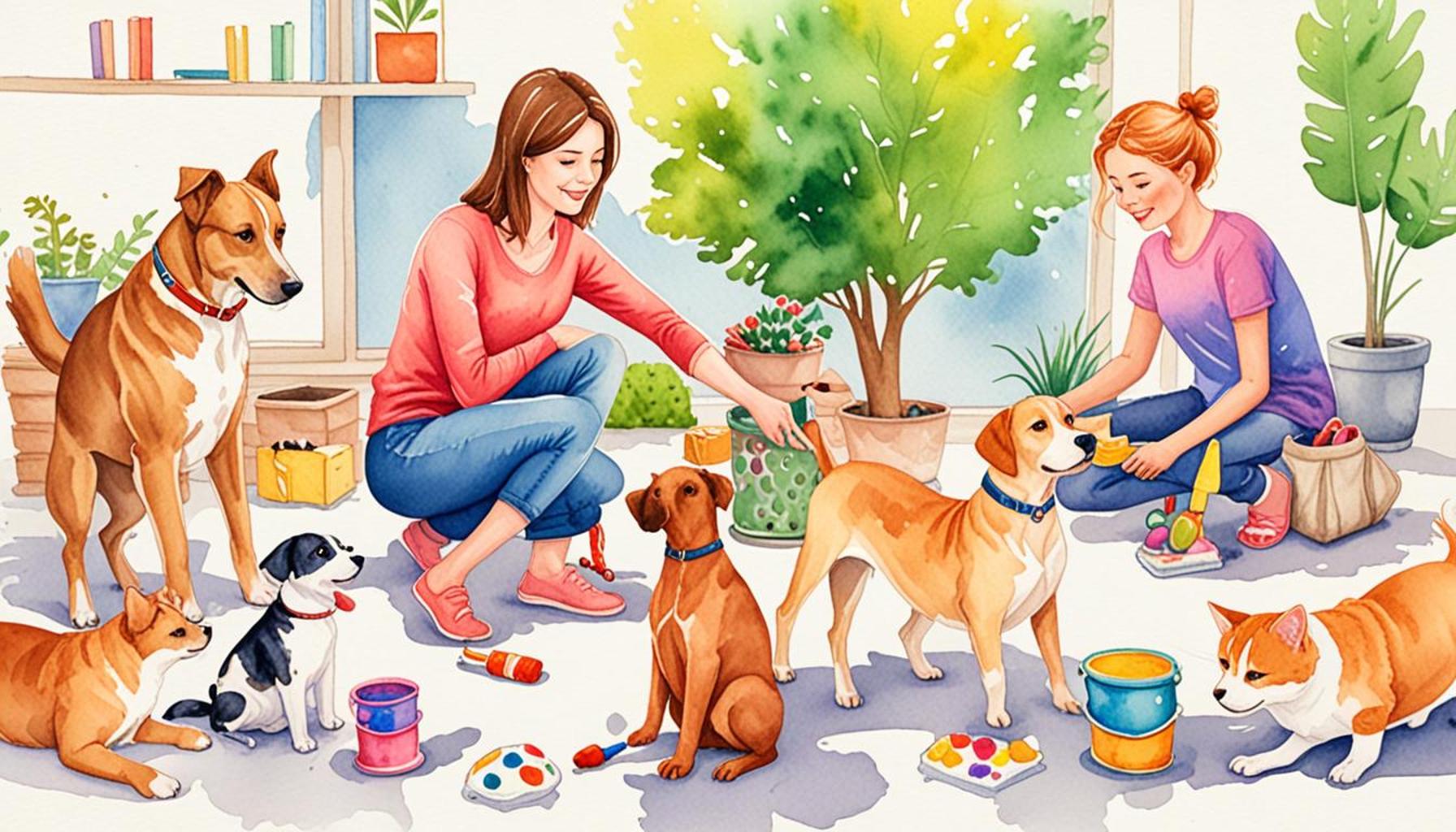How to Teach Basic Commands to Dogs in a Fun and Effective Way

Engaging Your Dog: A Journey into Basic Commands
Training your dog doesn’t have to be a daunting task. In fact, it can be an exciting adventure for both you and your furry companion! With the right techniques, teaching basic commands becomes a playful experience that can strengthen your bond. By setting the stage for learning, you can transform everyday moments into valuable opportunities for your dog.
Understanding the fundamentals of dog training is essential. Here are a few key points to keep in mind:
- Consistency is crucial: Use the same commands and rewards each time. Dogs thrive on repetition and will get confused if the commands or signals change.
- Short training sessions: Limit sessions to about 5-10 minutes to maintain focus. Remember, dogs, like children, have short attention spans, so quick, engaging sessions will yield the best results.
- Positive reinforcement: Praise and treats motivate dogs to learn effectively. Always associate a command that your dog successfully follows with a treat or enthusiastic praise, ensuring they understand the reward for their good behavior.
Incorporating fun can transform training into a game. Using toys or engaging in playful activities while training helps to keep your dog’s attention and eagerness intact. For instance, if your dog masters the “sit” command, you can have a mini-celebration with their favorite toy. This approach not only benefits their obedience but also enhances their overall well-being. It creates a positive association with training time, leading to a more willing learner.
By teaching commands like “sit,” “stay,” and “come,” you provide your dog with essential life skills. For example, the “sit” command can be particularly useful in public places to prevent jumping on strangers, while “come” is crucial for safety, allowing you to call your dog back in potentially dangerous situations—a busy street or a park with wildlife. These commands improve safety and communication while allowing your dog to engage positively in different environments.
Throughout this article, we’ll explore various methods and tips that make learning both enjoyable and effective. You may discover the joy of incorporating agility training equipment into your routine or utilizing interactive toys that prompt your dog to think and respond. Moreover, consistency in commands doesn’t just apply to verbal cues; hand signals can also reinforce learning. For example, using a flat hand to signal “stay” can provide a visual cue that your dog can associate with the command.
Get ready to embark on a fulfilling journey of teaching your dog the basics while having lots of fun along the way! Enhance your dog training experience by considering your dog’s unique personality and preferences, ensuring that every session is tailored and effective.
Making Training Playful: Essential Commands for Every Dog
Teaching your dog basic commands is not only a matter of obedience; it’s about establishing clear communication and enhancing the bond that you share. As you begin this journey, one of the first commands to focus on is the all-important “sit.” It’s often the foundation for many other commands and can help in chaotic situations, like keeping your dog calm during a visit to the vet or when meeting new people.
To teach “sit,” you can start in a quiet environment free from distractions. Hold a treat close to your dog’s nose, then slowly move your hand upwards, allowing their head to follow the treat while their bottom naturally lowers to the ground. As soon as they are seated, say the command “sit” and reward them immediately with praise and the treat. This method not only instills the command but also reinforces positive behavior.
Another essential command is “stay,” which teaches your dog to remain in one position. To train this command, first, ask your dog to sit. While standing in front of them, open your palm as a signal and clearly say “stay.” Take a step back; if your dog stays put, return and reward them. Gradually increase the distance and duration over several sessions, ensuring your dog understands that staying put leads to rewards.
While practicing these commands, consider the following tips to maximize your training sessions:
- Use High-Value Treats: Choose treats that your dog loves, which can motivate them to pay attention. This could be small pieces of cooked chicken, cheese, or even store-bought training treats.
- Incorporate Toys: Use a favorite toy as part of the reward system. This can create excitement and make training feel less like work and more like play.
- Vary Your Training Locations: Changing the environment, such as moving from your living room to the backyard or a local park, can help your dog generalize commands. They’ll learn to respond no matter where you are.
- Be Patient: Every dog learns at their own pace. If your dog doesn’t catch on immediately, remain patient and consistent. This process can take time, but the rewards are worth it.
As you reinforce these commands, remember that positive reinforcement is the cornerstone of effective dog training. It’s about rewarding the behavior you want to see more of, not just correcting mistakes. For instance, if they’re hesitant about sitting, instead of reprimanding them, coax them further with treats, leading them to discover the right action themselves.
Throughout the training process, keep the atmosphere light and filled with joy. Celebrate small victories with excitement, as this encourages your dog to engage more actively in learning. Each session should be an opportunity for both of you to grow, ensuring that your dog not only understands but also enjoys the process of learning commands. As you embark on teaching basic commands, you’ll find that the journey can be as fulfilling as the destination itself.
How to Teach Basic Commands to Dogs in a Fun and Effective Way
When it comes to training your dog, understanding how to teach basic commands in an engaging manner can significantly boost the learning experience. Dogs thrive in environments that are playful and rewarding, making it crucial to incorporate fun elements into your training sessions. Here are several aspects that can enhance your dog-training routine.
Engagement Techniques
Introducing interactive training games can help maintain your dog’s interest. For example, using toys as rewards or incorporating agility challenges not only stimulates their minds but also encourages them to follow your commands. This approach makes the learning process enjoyable for both the dog and the trainer.
The Power of Positive Reinforcement
Positive reinforcement is a cornerstone of effective dog training. When your dog successfully performs a command, immediately reward them with treats, praise, or playtime. This will make them associate the command with something enjoyable, further solidifying their understanding and execution of the command.
Short Training Sessions
Keep training sessions brief but focused. Sessions of about 5 to 10 minutes are ideal, as they help prevent your dog from losing interest or becoming overwhelmed. This strategy is particularly effective for puppies and younger dogs, who have shorter attention spans.
Consistency is Key
Using the same commands for the same actions is essential. Consistency in your language and actions helps your dog quickly learn and internalize what you expect from them. Communicating with clear, concise commands will yield the best results.
| Training Technique | Benefits |
|---|---|
| Interactive Games | Enhances focus and makes learning enjoyable |
| Positive Reinforcement | Creates a positive association with commands and strengthens bond |
With these techniques in mind, you’ll be well on your way to teaching your dog basic commands while making the experience fun and effective. Incorporating play into training not only yields better results but also strengthens the bond you share with your furry friend.
Building on Basics: Advanced Commands and Tricks
Once your dog has mastered the foundational commands of “sit” and “stay,” it’s time to enrich their learning experience with more advanced commands and fun tricks. These not only stimulate your dog’s mind but also keep the training process engaging and rewarding for both you and your pet. Let’s explore some popular commands that can add variety to your training routine.
One exciting command to teach is “come.” This command is essential for your dog’s safety, helping them return to you when called. To train this, it’s effective to start in a secure environment, such as your backyard or a closed room. Begin by using a leash to guide your dog, call their name followed by the command “come,” and gently pull on the leash when necessary. When they respond and get to you, reward them with a treat and lots of praise. With practice, you can gradually eliminate the need for the leash, challenging your dog to respond from greater distances.
Another fun command to consider is “down.” This command can be useful for calmness, especially during high-energy situations. Start with your dog in a sitting position. Hold a treat in your hand, allowing them to sniff it, but keep it close to the ground. Slowly move your hand down towards the floor, and as your dog follows the treat, they’re likely to naturally lower into a lying position. As soon as they lie down, say “down” and offer the treat. This command can take a bit more time to learn, so patience is key.
In addition to commands, you might want to teach your dog fun tricks like “spin” or “roll over” that keep the training dynamic and enjoyable. To teach the “spin” trick, lure your dog in a circular motion with a treat, encouraging them to follow it. Say “spin” as they complete the circle, rewarding them afterward. In contrast, the “roll over” command involves your dog lying down first, then luring them to roll onto their side using a treat and gradually guiding them to roll over. This trick can be a great way to show off your dog’s skills to friends and family.
Incorporating training games can greatly enhance the fun aspect of learning. Games like “hide and seek” can help reinforce commands in a playful setting. While your dog stays, go to another room and call them to find you. This encourages them to use their recall skills while creating a fun and stimulating activity. Engaging in such games ensures your dog associates learning with positive experiences.
- Limit Training Sessions: Keep training sessions short, ideally around 5-10 minutes, to prevent your dog from becoming fatigued or bored. Frequent short sessions are more effective than occasional long ones.
- Utilize Clicker Training: Clicker training can be an excellent technique to mark the exact moment your dog performs the desired action. Pair the clicker with treats to reinforce behaviors, allowing for clearer communication.
- Stay Consistent: Consistency across family members is crucial for reinforcing commands. Everyone should use the same words and signals to prevent confusion for your dog.
- Enhance with Social Training: Expose your dog to different environments and distractions gradually. Teaching commands in the presence of other dogs or people can help solidify their skills and improve focus.
As your dog becomes more adept at these commands and tricks, the training experience will deepen your bond and enhance their socialization skills. The goal is not merely to command your dog but to create a harmonious partnership based on trust and understanding, ultimately transforming the training from a chore into a joyful adventure.
Conclusion: Training for a Stronger Bond
Teaching your dog basic commands is not only vital for their safety but also a rewarding process that can significantly strengthen the bond between you and your furry friend. As explored throughout this article, the key to success lies in ensuring that the training experience is engaging and enjoyable for both you and your pet. By using techniques such as positive reinforcement, short training sessions, and fun tricks, you can cultivate an atmosphere where your dog feels motivated and excited to learn.
Remember, the goal of your training routine should transcend simple command mastery. It’s about fostering effective communication and mutual respect, creating a partnership based on trust. The methods shared here—from integrating play into training to employing consistent cues across different environments—are not just about learning commands; they are about building a fulfilling relationship.
Furthermore, don’t hesitate to explore various resources like online training videos, local classes, or professional trainers who can offer insights tailored to your dog’s unique personality and needs. Each dog is different, and understanding this can lead to more personalized training experiences that resonate with your pet.
In conclusion, as you embark on this journey of teaching your dog, keep it fun, be patient, and celebrate progress, no matter how small. Not only will you end up with a well-trained dog, but you’ll also create memorable moments that last a lifetime.


